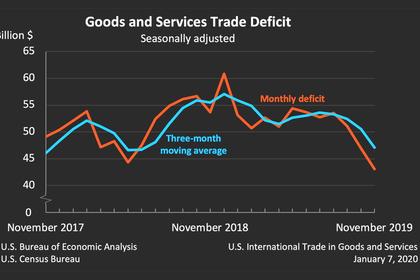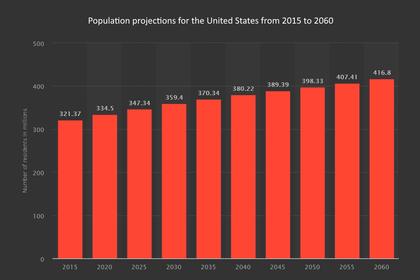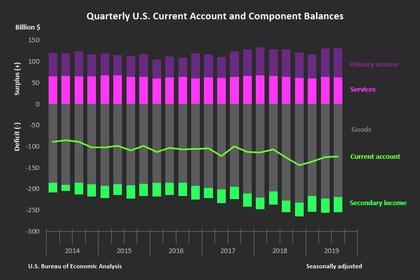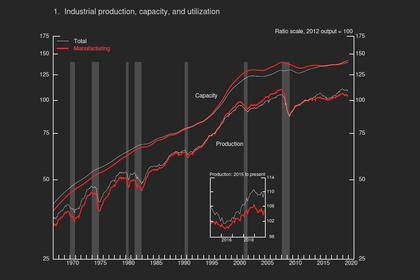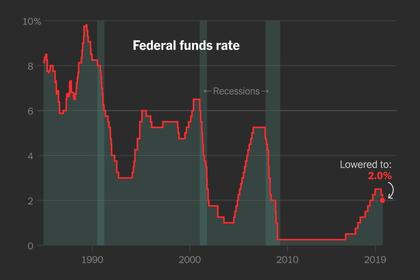
U.S. UNEMPLOYMENT 3.5% ANEW
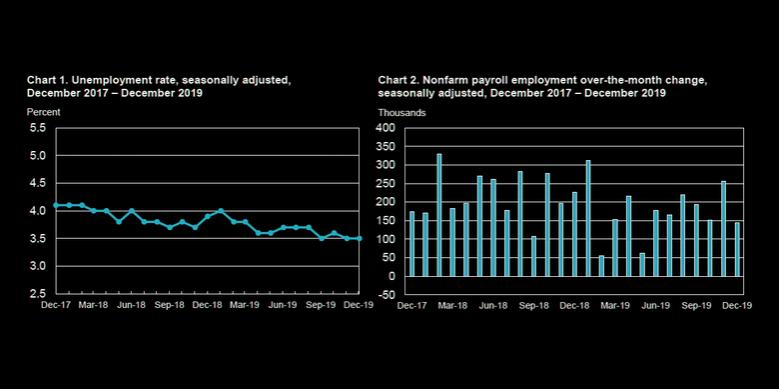
U.S. BLS - Total nonfarm payroll employment rose by 145,000 in December, and the unemployment rate was unchanged at 3.5 percent, the U.S. Bureau of Labor Statistics reported today. Notable job gains occurred in retail trade and health care, while mining lost jobs.
Household Survey Data
In December, the unemployment rate held at 3.5 percent, and the number of unemployed persons was unchanged at 5.8 million. A year earlier, the jobless rate was 3.9 percent, and the number of unemployed persons was 6.3 million. (See table A-1.)
Among the major worker groups, the unemployment rates for adult men (3.1 percent), adult women (3.2 percent), teenagers (12.6 percent), Whites (3.2 percent), Blacks (5.9 percent), Asians (2.5 percent), and Hispanics (4.2 percent) showed little or no change in December. (See tables A-1, A-2, and A-3.)
The number of long-term unemployed (those jobless for 27 weeks or more), at 1.2 million, was unchanged in December and accounted for 20.5 percent of the unemployed. (See table A-12.)
The labor force participation rate was unchanged at 63.2 percent in December. The employment-population ratio was 61.0 percent for the fourth consecutive month but was up by 0.4 percentage point over the year. (See table A-1.)
The number of persons employed part time for economic reasons, at 4.1 million, changed little in December but was down by 507,000 over the year. These individuals, who would have preferred full-time employment, were working part time because their hours had been reduced or they were unable to find full-time jobs. (See table A-8.)
In December, 1.2 million persons were marginally attached to the labor force, down by 310,000 from a year earlier. (Data are not seasonally adjusted.) These individuals were not in the labor force, wanted and were available for work, and had looked for a job sometime in the prior 12 months. They were not counted as unemployed because they had not searched for work in the 4 weeks preceding the survey. (See table A-16.)
Among the marginally attached, there were 277,000 discouraged workers in December, down by 98,000 from a year earlier. (Data are not seasonally adjusted.) Discouraged workers are persons not currently looking for work because they believe no jobs are available for them. The remaining 969,000 persons marginally attached to the labor force in December had not searched for work for reasons such as school attendance or family responsibilities. (See table A-16.)
Establishment Survey Data
Total nonfarm payroll employment increased by 145,000 in December. Notable job gains occurred in retail trade and health care, while mining lost jobs. In 2019, payroll employment rose by 2.1 million, down from a gain of 2.7 million in 2018. (See table B-1.)
In December, retail trade added 41,000 jobs. Employment increased in clothing and accessories stores (+33,000) and in building material and garden supply stores (+7,000); both industries showed employment declines in the prior month. Employment in retail trade changed little, on net, in both 2019 and 2018 (+9,000 and +14,000, respectively).
Employment in health care increased by 28,000 in December. Ambulatory health care services and hospitals added jobs over the month (+23,000 and +9,000, respectively). Health care added 399,000 jobs in 2019, compared with an increase of 350,000 in 2018.
Employment in leisure and hospitality continued to trend up in December (+40,000). The industry added 388,000 jobs in 2019, similar to the increase in 2018 (+359,000).
Mining employment declined by 8,000 in December. In 2019, employment in mining declined by 24,000, after rising by 63,000 in 2018.
Construction employment changed little in December (+20,000). Employment in the industry rose by 151,000 in 2019, about half of the 2018 gain of 307,000.
In December, employment in professional and business services showed little change (+10,000). The industry added 397,000 jobs in 2019, down from an increase of 561,000 jobs in 2018.
Employment in transportation and warehousing changed little in December (-10,000).
Employment in the industry increased by 57,000 in 2019, about one-fourth of the 2018 gain of 216,000.
Manufacturing employment was little changed in December (-12,000). Employment in the industry changed little in 2019 (+46,000), after increasing in 2018 (+264,000).
In December, employment showed little change in other major industries, including wholesale trade, information, financial activities, and government.
In December, average hourly earnings for all employees on private nonfarm payrolls rose by 3 cents to $28.32. Over the last 12 months, average hourly earnings have increased by 2.9 percent. In December, average hourly earnings of private-sector production and nonsupervisory employees, at $23.79, were little changed (+2 cents). (See tables B-3 and B-8.)
The average workweek for all employees on private nonfarm payrolls was unchanged at 34.3 hours in December. In manufacturing, the average workweek and overtime remained at 40.5 hours and 3.2 hours, respectively. The average workweek of private-sector production and nonsupervisory employees held at 33.5 hours. (See tables B-2 and B-7.)
The change in total nonfarm payroll employment for October was revised down by 4,000 from +156,000 to +152,000, and the change for November was revised down by 10,000 from +266,000 to +256,000. With these revisions, employment gains in October and November combined were 14,000 lower than previously reported. (Monthly revisions result from additional reports received from businesses and government agencies since the last published estimates and from the recalculation of seasonal factors.) After revisions, job gains have averaged 184,000 over the last 3 months.
-----
Earlier:
